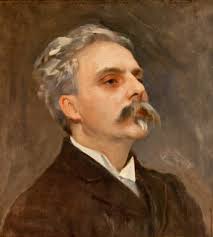Introduction:
In the rich tapestry of classical music, few composers have been able to capture the essence of serenity and emotional depth quite like Gabriel Fauré. His music, delicate yet profound, has left an indelible mark on the world of composition. In this blog post, we will delve into the fascinating biography of Gabriel Fauré, exploring the life and artistic journey of this remarkable composer.
Early Years and Musical Foundation:
Gabriel Urbain Fauré was born on May 12, 1845, in Pamiers, a small town in the South of France. From a young age, he showed a natural affinity for music and began his musical education at the École Niedermeyer in Paris. There, Fauré honed his skills as a pianist and organist, quickly establishing himself as a talented musician.
Fauré’s formative years were influenced by the Romantic era, with composers like Franz Liszt and Richard Wagner leaving a lasting impression on his artistic sensibilities. However, it was his encounter with Johann Sebastian Bach’s music that ignited Fauré’s passion for composition and helped shape his unique style.
The Development of Fauré’s Musical Style:
Gabriel Fauré’s musical style evolved over time, reflecting a departure from the grandiosity of the Romantic era. His compositions exude an elegant simplicity and a refined aesthetic, characterized by subtle harmonies, delicate melodies, and intricate counterpoint. Fauré sought to create music that stirred the soul and evoked profound emotions, often incorporating themes of longing, introspection, and spiritual transcendence.
Career and Influence:
Fauré’s career spanned several prestigious positions and collaborations. He served as an organist at several churches, including the Église de la Madeleine and the Église Saint-Sulpice in Paris. Fauré’s dedication to his craft also led him to become a professor at the Paris Conservatoire, where he mentored many aspiring composers, including Maurice Ravel and Nadia Boulanger.
As a composer, Fauré composed across various genres, including orchestral works, chamber music, choral compositions, and songs. Some of his most renowned pieces include his Requiem, Pavane, and the opera “Pénélope.” Fauré’s music often incorporated elements of Impressionism, and his harmonic innovations and subtle tonalities were influential in shaping the French musical landscape of the early 20th century.
Personal Life and Legacy:
While Fauré’s professional life was flourishing, his personal life was not without its challenges. He faced hearing loss and struggled with health issues throughout his later years. However, his unwavering dedication to his craft allowed him to create masterpieces even in the face of adversity.
Gabriel Fauré’s legacy endures today through his timeless compositions, which continue to captivate audiences with their emotional depth and ethereal beauty. His profound influence on future generations of composers is immeasurable, and his commitment to expressing the human experience through music has left an indelible mark on the world of classical composition.
Conclusion:
Gabriel Fauré, a master of musical serenity, crafted a unique artistic language that resonates with listeners to this day. His ability to convey profound emotions through subtle harmonies and delicate melodies is a testament to his genius. Fauré’s music invites us to explore the depths of our souls and find solace in the power of art. As we continue to appreciate and perform his compositions, we honor the legacy of a composer who dedicated his life to illuminating the human spirit through the beauty of music.


Comments are closed